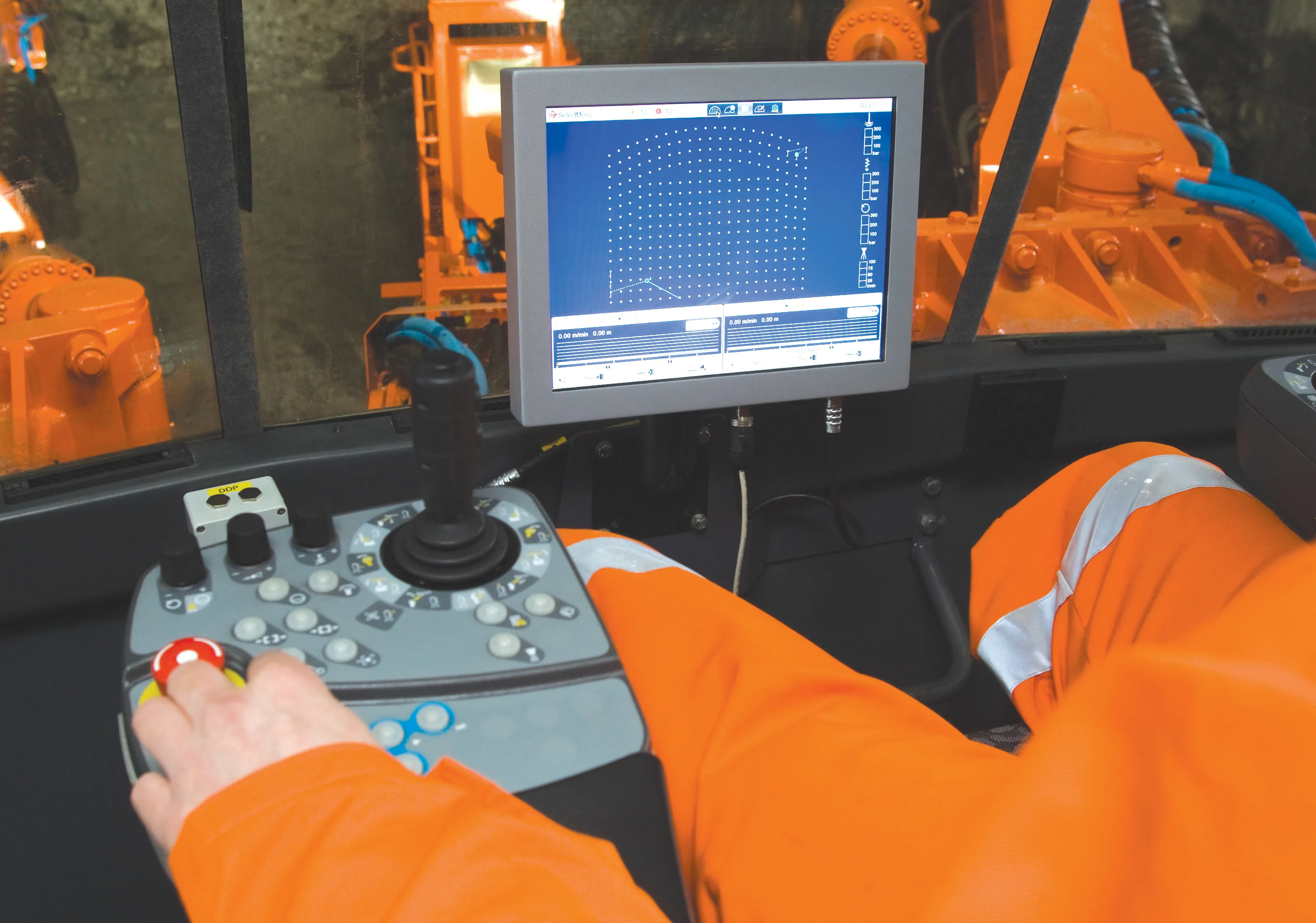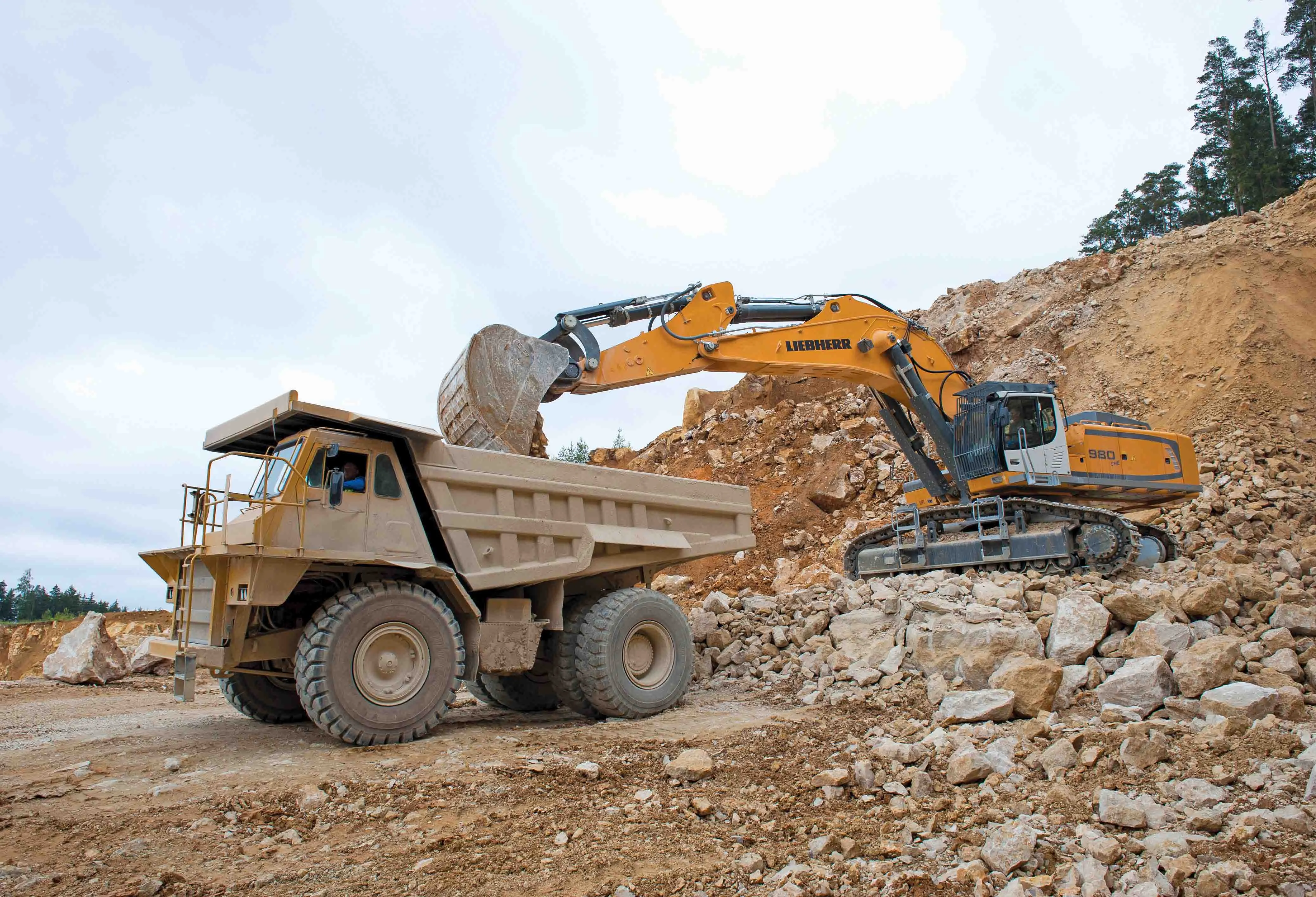A Case CX700B excavator is delivering high productivity for an extraction application in Germany's volcanic Eifel region.
February 16, 2012
Read time: 3 mins
A 176 Case CX700B excavator is delivering high productivity for an extraction application in Germany's volcanic Eifel region.
The heavyweight Case CX700B ME excavator is being used by2746 Backes Bau- und Transporte from Auw to extract material at the Dockweiler pit, and this is processed in a mobile crushing plant, with the basalt and lava-based product then being used in road construction.
The 70tonne crawler excavator has been specially configured for extraction operations and features high tear-out forces, fast loading cycles, a modern engine and a sophisticated hydraulic control system to optimise performance.
The company already has other Case machines in its fleet, operating a 921E wheeled loader and a CX225SR excavator and the performance of these units helped in the choice of the CX700B for the Dockweiler operation. However key factors in choosing the Case CX machine for the Dockweiler pit application were the powerful hydraulics, robust construction and precise steering features. These were required due to the operating conditions in the basalt and lava pit in Eselberg, which is close to the local borders of Dockweiler, and which has guidelines for nature and landscape conservation.
The company took over the Dockweiler pit around three years ago and had to initially clear up the remains of the previous extraction, which had been relatively unregulated and haphazard. The company was then able to examine the deposits and introduce a sustainable management approach.
While Backes Bau- und Transporte wanted to provide its road construction operations with the necessary materials and aggregates from the site, its policy is to ensure operations are as sound and sustainable as possible, with minimum impact on the local residents.
By using the Case CX700B, the firm has been able to reduce its blasting operations, which has been a major benefit for the area. The blast holes are only sunk to depths of 4-5m, which reduces the shock waves from each shot. As the excavator has high tear-out forces, it can clear lighter material on its own. It can also break out material on the standing wall using the pressure of the bucket tip, and can even crush it if the structure of the rock has been sufficiently loosened by the detonation. This allows the company to extract material in a targeted fashion, following the workable layers.
The machine is able to move the biggest blocks of basalt and lava that are broken out of the face and can lift and load these, which can weigh up to 5-6tonnes, onto the dump truck.
To minimise wear and tear in the primary crusher, which is configured to handle rocks weighing up to 1tonnes, larger blocks are first broken up by a second excavator equipped with a hydraulic breaker. The chunks of rock can then be transported to the crusher by an ADT.
A major safety benefit of the CX700B is the ROPS/FOPS protection for the cab, which protects the operator when the machine is used at the face.
Backes Bau- und Transporte operates five lava and basalt quarries, with a total area of over 100hectrares.
The material it extracts is used in its own construction projects and is also carried to site in its own fleet of tipper trucks. The company estimates that the Dockweiler site has an output of around 200,000tonnes/year and the facility has sufficient reserves for an operating life of 50-100 years.
In total the company has some 60 excavators, 60 wheeled loaders and five bulldozers in its fleet and the good performance of its three Case units means that this brand will continue in the fleet for some time to come.
The heavyweight Case CX700B ME excavator is being used by
The 70tonne crawler excavator has been specially configured for extraction operations and features high tear-out forces, fast loading cycles, a modern engine and a sophisticated hydraulic control system to optimise performance.
The company already has other Case machines in its fleet, operating a 921E wheeled loader and a CX225SR excavator and the performance of these units helped in the choice of the CX700B for the Dockweiler operation. However key factors in choosing the Case CX machine for the Dockweiler pit application were the powerful hydraulics, robust construction and precise steering features. These were required due to the operating conditions in the basalt and lava pit in Eselberg, which is close to the local borders of Dockweiler, and which has guidelines for nature and landscape conservation.
The company took over the Dockweiler pit around three years ago and had to initially clear up the remains of the previous extraction, which had been relatively unregulated and haphazard. The company was then able to examine the deposits and introduce a sustainable management approach.
While Backes Bau- und Transporte wanted to provide its road construction operations with the necessary materials and aggregates from the site, its policy is to ensure operations are as sound and sustainable as possible, with minimum impact on the local residents.
By using the Case CX700B, the firm has been able to reduce its blasting operations, which has been a major benefit for the area. The blast holes are only sunk to depths of 4-5m, which reduces the shock waves from each shot. As the excavator has high tear-out forces, it can clear lighter material on its own. It can also break out material on the standing wall using the pressure of the bucket tip, and can even crush it if the structure of the rock has been sufficiently loosened by the detonation. This allows the company to extract material in a targeted fashion, following the workable layers.
The machine is able to move the biggest blocks of basalt and lava that are broken out of the face and can lift and load these, which can weigh up to 5-6tonnes, onto the dump truck.
To minimise wear and tear in the primary crusher, which is configured to handle rocks weighing up to 1tonnes, larger blocks are first broken up by a second excavator equipped with a hydraulic breaker. The chunks of rock can then be transported to the crusher by an ADT.
A major safety benefit of the CX700B is the ROPS/FOPS protection for the cab, which protects the operator when the machine is used at the face.
Backes Bau- und Transporte operates five lava and basalt quarries, with a total area of over 100hectrares.
The material it extracts is used in its own construction projects and is also carried to site in its own fleet of tipper trucks. The company estimates that the Dockweiler site has an output of around 200,000tonnes/year and the facility has sufficient reserves for an operating life of 50-100 years.
In total the company has some 60 excavators, 60 wheeled loaders and five bulldozers in its fleet and the good performance of its three Case units means that this brand will continue in the fleet for some time to come.







